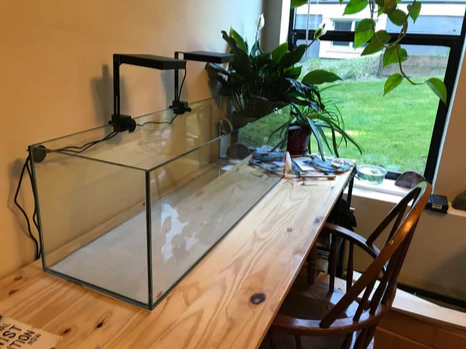Top Tips for Setting Up Your First Aquarium

Setting up your first aquarium can feel like diving into a whole new world. It’s exciting, yet there’s a lot to consider. Whether you’re aiming for a stunning freshwater tank or a vibrant saltwater paradise, the right preparation will set you up for success. Here, we’ll share top tips that will not only make your aquarium beautiful but also ensure a healthy environment for your aquatic friends.
Choosing the Right Aquarium Size
When it comes to aquariums, size matters. Beginners often think that smaller tanks are easier to manage, but they can be trickier. A 20-gallon tank is often recommended for first-timers. It offers more stability in water parameters and gives fish ample space to swim. Plus, larger tanks can accommodate a more diverse range of species.
Selecting the Best Location
Placement is key. Choose a sturdy, level surface away from direct sunlight and heat sources. Too much sunlight can lead to algae growth, while heat can affect the water temperature. Ensure there’s easy access to electrical outlets for your water fountains pump and lighting.
Investing in Quality Equipment
Your aquarium setup relies heavily on the right equipment. Here’s what you’ll need:
- Aquarium Pump: This is crucial for keeping the water circulating and oxygenated. A good pump helps maintain water clarity and reduces the risk of stagnation. Choose a pump that matches the size of your tank.
- Filter: A reliable filter is essential for keeping your water clean. Consider a combination of mechanical, chemical, and biological filtration for optimal results.
- Heater: If you’re going for tropical fish, a heater will help maintain a stable water temperature.
- Lighting: Depending on your fish and plants, different lighting options might be suitable. aquatic lights are energy-efficient and long-lasting.
Setting Up the Substrate
Now, let’s talk about the substrate. This is the layer at the bottom of your tank and plays a significant role in the health of your aquarium. Choose a substrate that suits the type of fish you plan to keep. For example, sandy substrates are great for bottom-dwellers, while gravel is ideal for planted tanks. Rinse your substrate thoroughly before adding it to the tank to avoid cloudiness.
Adding Decorations and Plants
Aquascaping is an art! Adding decorations and plants not only enhances the beauty of your aquarium but also provides hiding spots for fish. Use natural materials like rocks and driftwood for a more authentic look. If you’re including live plants, research their light and nutrient needs to ensure they thrive.
Filling the Tank with Water
Now it’s time to fill your tank! Use a water conditioner to remove harmful chemicals from tap water. Pour water slowly to avoid disturbing the substrate. You can even place a plate on the substrate to minimize disruption when pouring.
Cycling Your Aquarium
Before introducing fish, your aquarium needs to go through a process called cycling. This establishes beneficial bacteria that break down harmful waste. You can cycle your aquarium using a fishless method with ammonia or simply add hardy fish that can tolerate the initial conditions. This process can take several weeks, so be patient!
Monitoring Water Parameters
Once your tank is cycled, it’s crucial to monitor water parameters regularly. Test for ammonia, nitrites, nitrates, and pH levels. A reliable test kit will help you keep track of these readings. Maintaining stable parameters is vital for the health of your fish.
Choosing the Right Fish
When it’s time to select your fish, do your research! Choose species that are compatible with each other and the size of your tank. Start with a few fish and gradually add more to avoid overwhelming the system. Always introduce new fish slowly to prevent stress.
Feeding Your Fish
Proper nutrition is essential for a vibrant aquarium. Choose high-quality fish food appropriate for the species you have. Avoid overfeeding, as this can lead to water quality issues. A good rule of thumb is to feed only what your fish can consume in a few minutes.
Regular Maintenance
Keeping your aquarium in tip-top shape requires routine maintenance. Change 10-15% of the water weekly to keep it clean. Regularly check your equipment to ensure everything’s functioning properly. Don’t forget to clean the filter as needed, but avoid cleaning it all at once to preserve beneficial bacteria.
Conclusion
Setting up your first aquarium is an exhilarating journey that brings the beauty of underwater life into your home. By following these top tips, you can create a thriving aquatic environment that not only looks stunning but also supports the well-being of your fish. Remember, patience and consistency are key. With a little effort, your first aquarium can become a mesmerizing centerpiece that you’ll enjoy for years to come. Happy fishkeeping!








